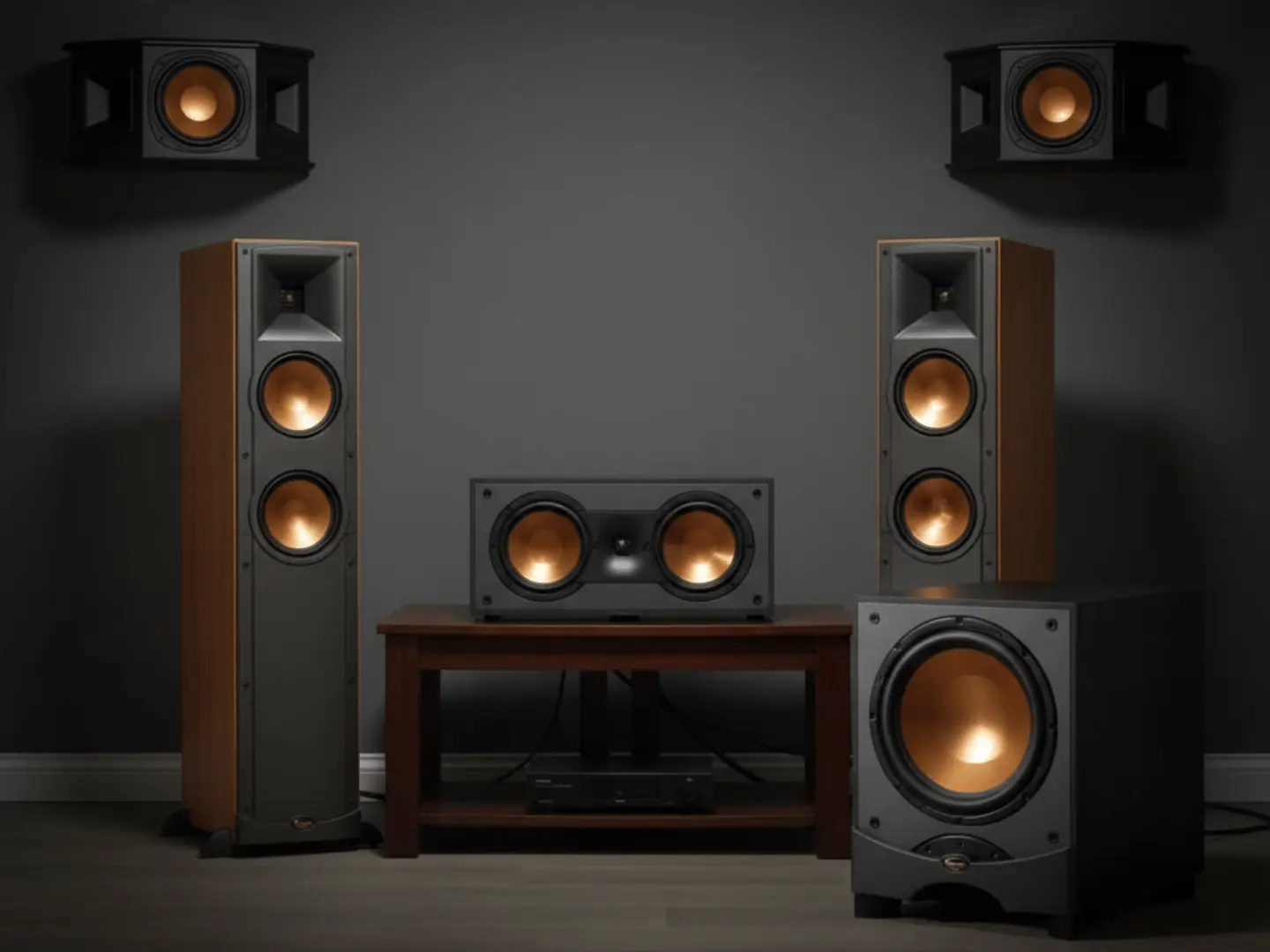My Editor Told Me to Cut the Crap. So Here’s My Honest Klipsch RF-25 System Review
I was going to start this review in my usual way, telling a little story to set the scene. This time, it was going to be about how the ports on these floorstanders are so large that they could be compared to the penstocks of the Hoover Dam. But Michael, the editor, told me to cut the crap and get straight into it, so here goes.
First Impressions
The floorstanders aren’t what I’d call pretty, but they’re certainly not ugly either. Striking and purposeful is a better description. My review pair came in a cherry veneer that paired nicely with the black plastic fascia. The fascia runs the full height of the speaker, housing the horn tweeter and two 165mm Cerametallic copper-colored drivers. In my darkened room, the orange cones absorbed the projector’s stray light and glowed almost ominously.
Check Out: Klipsch RP-600M Review
Power and Balance
The first thing that stood out with the Klipsch system was just how easy it is to drive. With a sensitivity rating of 97dB, the RF-25s needed the volume knob only about halfway compared to my own B&W 603s. Treble was brilliantly clear, and although I expected them to be a bit top-heavy, the bass response was surprisingly strong.
On rock and hip hop, the bass was punchy and authoritative. With softer tracks like Norah Jones or Elton John, it could feel a touch too forward — likely a result of placing the speakers close to the corners of my room so they wouldn’t block my projection screen.
Centre of Attention
The RC-25 centre speaker features nearly identical drivers and tweeters as the floorstanders, though slightly smaller. It also radiates that same “radioactive glow” during movie playback. Performance was consistent with the RF-25s — clear, dynamic, and seamless.
Surrounds in Action
The matching RS-25 surrounds weren’t available, so I tested the next model up: the RS-35. These trapezoidal surrounds use a horn tweeter on each angled panel and a Cerametallic driver on the shorter parallel side. After running Yamaha’s RX-V2500 auto-setup, the surrounds matched the treble of the fronts perfectly. In Saving Private Ryan, strafing bullets, and in The Two Towers, fizzing arrows, the surround effects were almost seamless, highlighting the benefit of Klipsch’s consistent driver design across the system.
Subwoofer Surprise
The biggest surprise and my personal favorite was the RW-12 subwoofer. At first, it didn’t blow me away, but over three weeks, it revealed itself as a real beast. Resident Evil’s relentless LFE track (90 out of its 97 minutes) pushed it hard, and it never faltered.
This front-firing 300mm Cerametallic cone is powered by a 300W RMS amplifier and includes the usual features like 180° phase control and auto/standby mode. A standout detail is the volume knob — cleverly recessed on the side near the front for easy adjustment. Compared with my own B&W ASW 650, the RW-12 hit harder, faster, and simply sounded better. I’d swap in a heartbeat.
Build, Packaging & Extras
Klipsch clearly put effort into the overall product experience. Packaging is vacuum-sealed, manuals are nicely presented, and thoughtful extras are included: the centre speaker has an adjustable foot to alter projection angle, while the floorstanders ship with large spikes and outrigger feet for stability on hard floors.
Final Thoughts
The Klipsch gear is undeniably a quality product, and that’s evident from the moment you open the box. Packaging is thoughtfully done, manuals are neatly presented, the centre speaker comes with a height-adjustable foot for perfect angling, and the floorstanders include large spikes and outrigger feet for stability on hard floors. Attention to detail like this reinforces the adage: you get what you pay for. These speakers don’t just look purposeful — they’re well-made, great-sounding, and built to impress.
